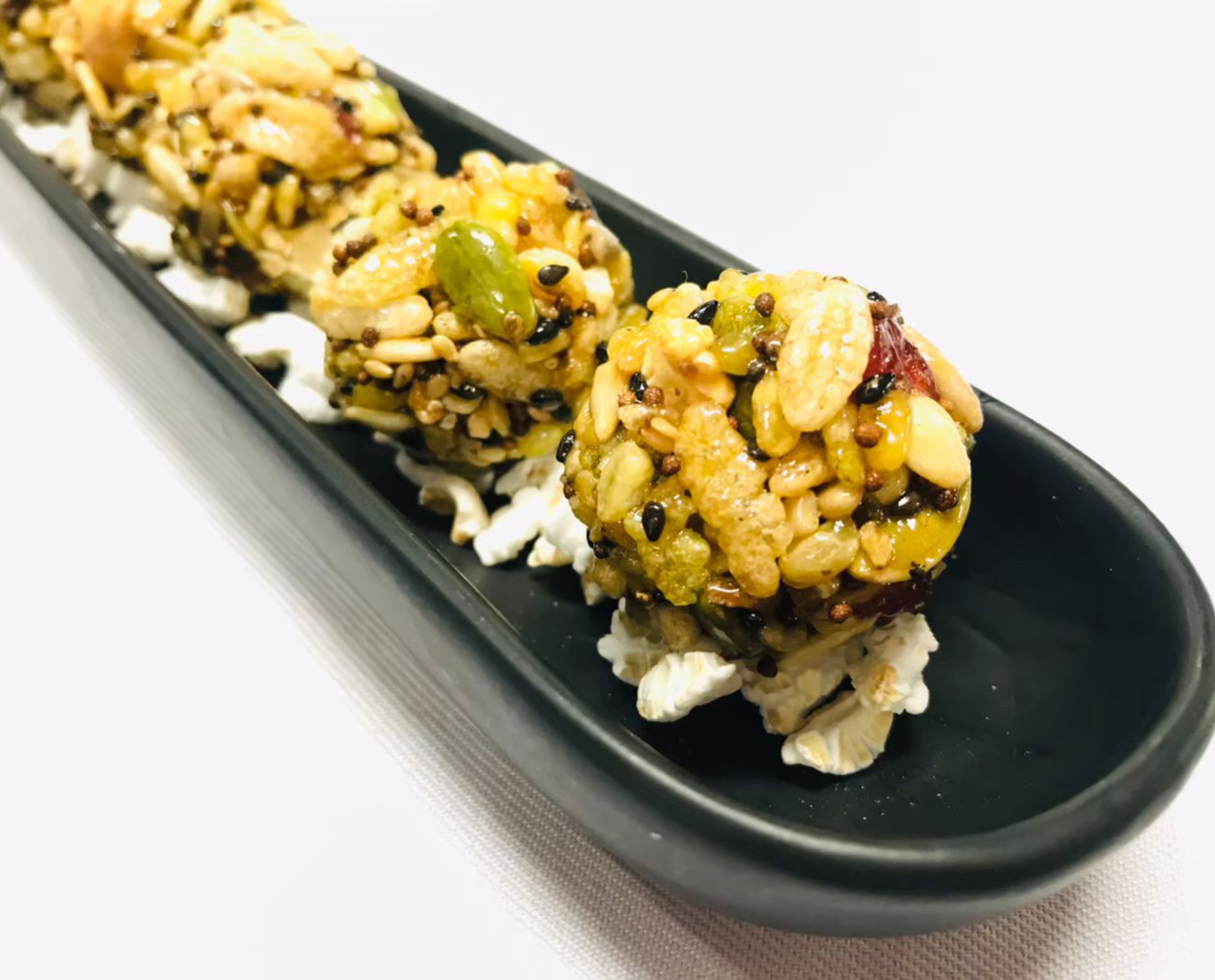Phuan Fusion Recipe: Upgrading Thai Phuan’s Cuisine for Tourism in Hat Siao Sub-district, Sukhothai Province, Thailand
Main Article Content
Abstract
In Hat Siao Sub-district, Si Satchanalai District, Sukhothai Province of Thailand, there exists a unique style of Thai Phuan food characterized by its use of local ingredients such as fish, vegetables, and seasonal forest products. This culinary tradition emphasizes simplicity and natural flavors, avoiding the use of artificial additives. Despite the rich culinary heritage, efforts to attract tourists to this area have been lacking. This study aims to address this gap by developing Phuan Fusion food recipes tailored for tourism and creating innovative tourism activities centered around Phuan Fusion cooking. The key objectives include: 1) developing Phuan Fusion recipes that appeal to different types of tourists, 2) creating engaging tourism activities to showcase Phuan Fusion cooking, 3) enhancing the capabilities and potential of network partners involved in tourism, 4) testing the effectiveness of the developed tourism activities, 5) collaborating and learning with network partners to improve the tourism offerings. The study has identified 15 Phuan Fusion food recipes that cater to six types of tourists, along with three travel routes. Additionally, Good Agricultural Practices have been implemented, and farm stay options have been introduced to enhance the tourism experience. The innovative tourism activities include guided tours to orange orchards with demonstrations of safe agricultural practices, Phuan Fusion food cooking classes, and an immersive experience showcasing Phuan Fusion food preparation. As a result of these efforts, the community has been able to preserve the identity of traditional Thai Phuan food while creating new Phuan Fusion recipes tailored for creative tourism activities. This has had a positive economic impact, with each tourist contributing an income of 580 Baht (approximately 15.70 USD), leading to a monthly increase in community income of 48,333 Baht (approximately 1308 USD).
Article Details

This work is licensed under a Creative Commons Attribution-NonCommercial-NoDerivatives 4.0 International License.
Area Based Development Research Journal values copyright protection and licensing to safeguard author rights and facilitate the appropriate dissemination of research. Our policies ensure openness, accessibility, and attribution. Authors retain copyright ownership, and articles are published under a Creative Commons Attribution License (CC BY), allowing sharing, adaptation, and proper attribution. Authors have the freedom to publish under the CC BY license, granting broad reuse and distribution permissions. The journal supports posting articles on third-party repositories, adhering to institutional and funding restrictions. Author guidelines detail copyright and licensing requirements, empowering authors with knowledge about their rights and responsibilities. These policies cultivate an environment of collaboration, openness, and responsible sharing, benefiting authors and the research community while honoring intellectual property rights.
References
Akyürek, S. (2019). Recent advances in social sciences chapter 12: A new culinary trend: Fusion cuisine-sample application from some selected countries. UK: Cambridge Scholars Publishing.
Bae, J., & Lee, K. (2012). Effects of fusion-food cooking activity on elementary school students' knowledge, preferences and perceptions of Korean traditional foods. Journal of Community Nutrition, 17, 376-389.
Chamnancha, B. (2018). Gastronomy tourism: Thailand’s competitiveness. APHEIT Journal, 24(1), 103-116. (in Thai).
Collier, A., & Harraway, S. (1997). Principle of tourism. Auckland: Longman.
Danlapol, N. (2018). Arts of Thai fusion food decoration. Graduate Student Journal School Sakon Nakhon Rajabhat University, 15(71), 1-13. (in Thai).
Nadee, P. (2017). The cultural uniqueness of Tai Phuan influencing local tourism at Pak Phi, Nakhonnayok. EAU Heritage Journal Social Science and Humanities, 7(1), 61-69. (in Thai).
Nugkhong, S. (2004). The folklore of novice to be elephant parade. Retrieved November 23, 2023, from: https://www.sac.or.th/databases/rituals/detail.php?id=86. (in Thai).
Office of the National Economic and Social Development Council. (2023). The thirteenth national economic and social development plan (2023-2027). Bangkok: Office of the National Economic and Social Development Council (NESDC). (in Thai).
Office of Tourism and Sports Sukhothai. (2016). Sukhothai Provincial tourism development plan 2017 – 2021. Sukhothai: Office of Tourism and Sports, Sukhothai. (in Thai).
Panyayong, C., & Kobket, S. (2018). Study of food culture and establishment of standard Thai Phuan Cuisine Recipe to promote cultural tourism in Uttaradit and Sukhothai province. (Research report). Bangkok: The Thailand Research Fund (TRF). (in Thai).
Panyayong, C., & Kobket, S. (2019). Let's eat together ancient Thai Phuan food. Bangkok: Chulalongkorn university press. (in Thai).
Punturee, P. (2015). Tourist experience: The creation of food tourism activities in Thailand. Journal of Southern Technology, 8(2), 27-38.
Richards, G., & Marques, L. (2012). Exploring creative tourism: Introduction. Journal of Tourism Consumption and Practice, 4(2), 1-11.
Richards, G., & Raymond, C. (2000). Creative tourism. ATLAS News, 23, 16-20.
Rojrungsat, P. (2010). Community tourism. Bangkok: Odeonstore. (in Thai).
Spence, C. (2018). Contemporary fusion foods: How are they to be defined, and when do they succeed/fail?. International Journal of Gastronomy and Food Science, 13, 101-107.
Stanley, J., & Stanley, L. (2014). Food tourism a practical marketing guide. UK: CABI.
Strategy and Information for Provincial Development Group Sukhothai Provincial Office. (2022). Sukhothai master plan, B.E. 2566- 2570 (2023-2027). Sukhothai: Strategy and Information for Provincial Development Group Sukhothai Provincial Office.
Tippanete, N. (2022). Public participation and patterns of participation affecting the local development of subdistrict municipalities, Nakhonratchasima province. Journal of MCU Nakhondhat, 9(8), 395 – 413. (in Thai).
Torobrum, W., Wongnarat, A., Chanaka, A., & Meesa, B. (2022). Logo design of processed sea bass for fish farmer group in Samed Tai, Chachoengsao province. Area Based Development Research Journal, 14(3), 205-217. (in Thai).


